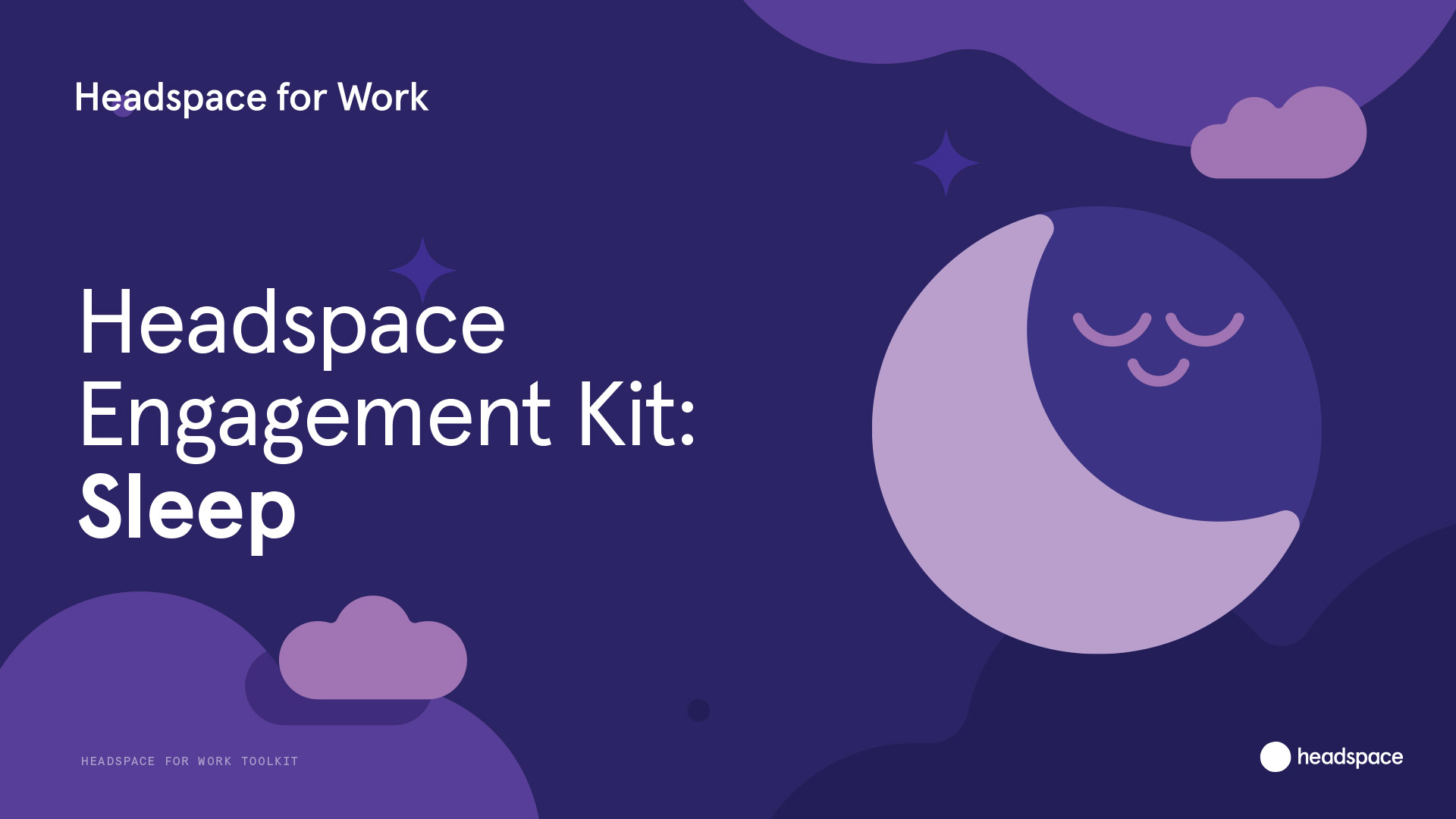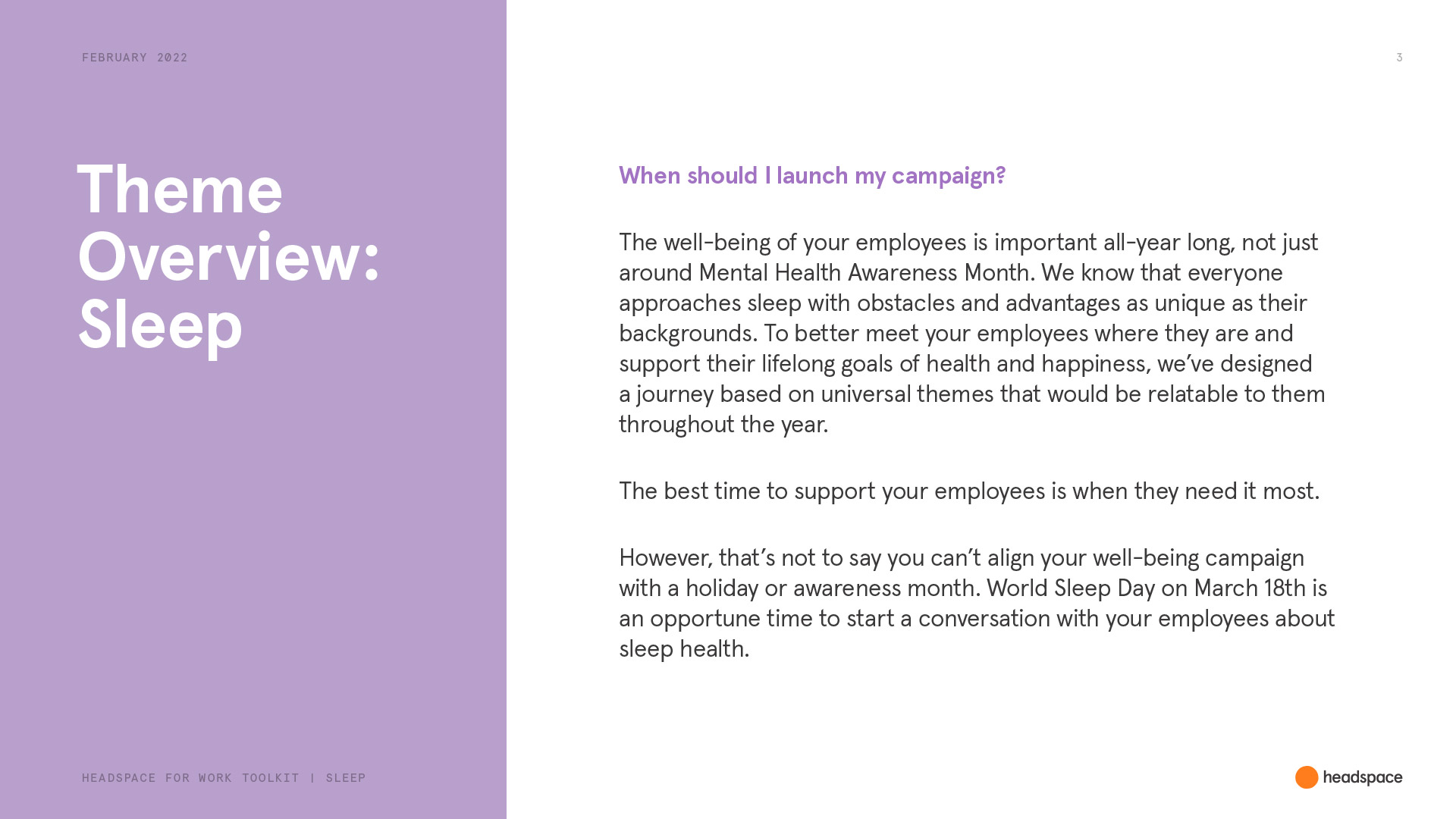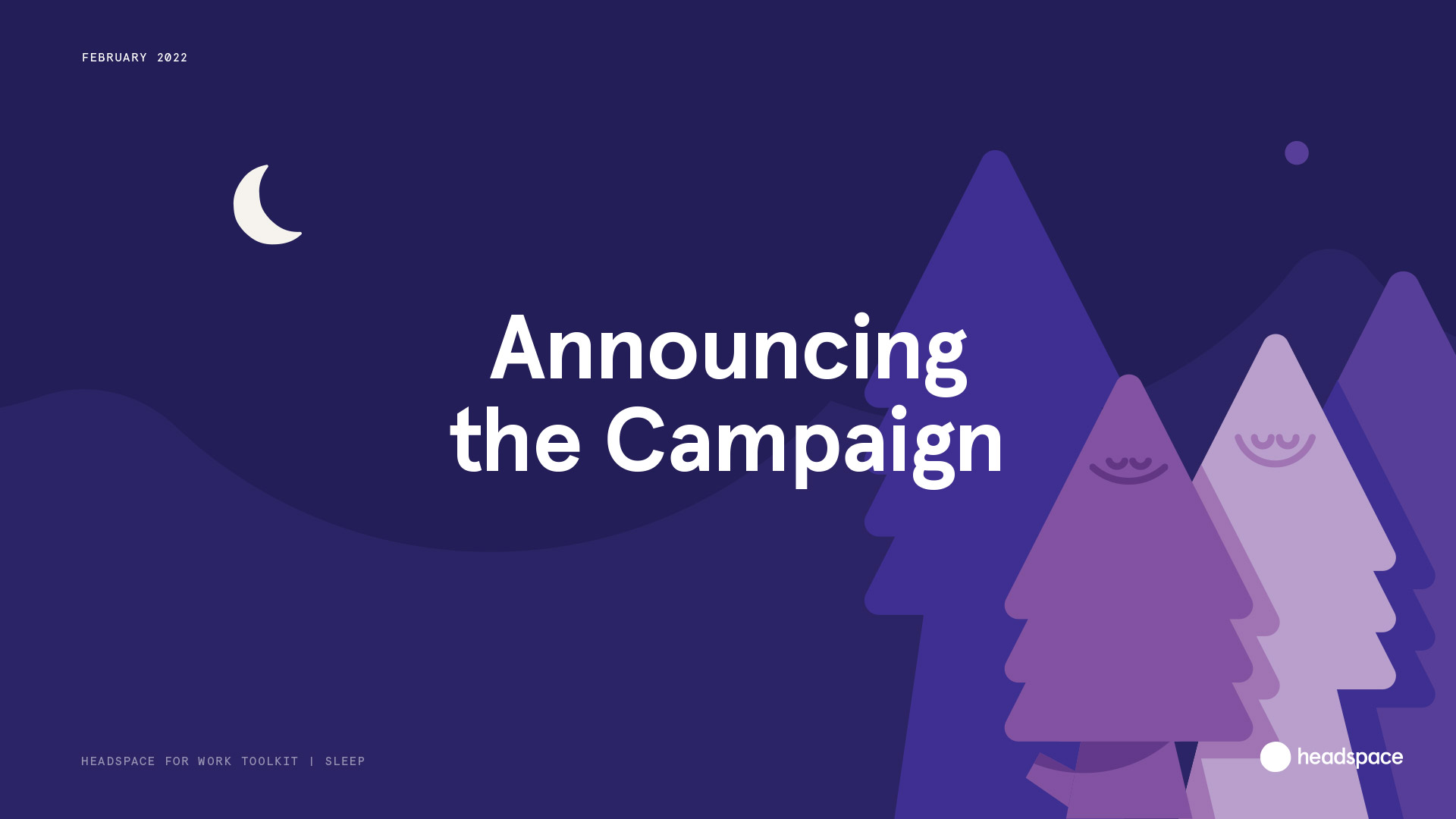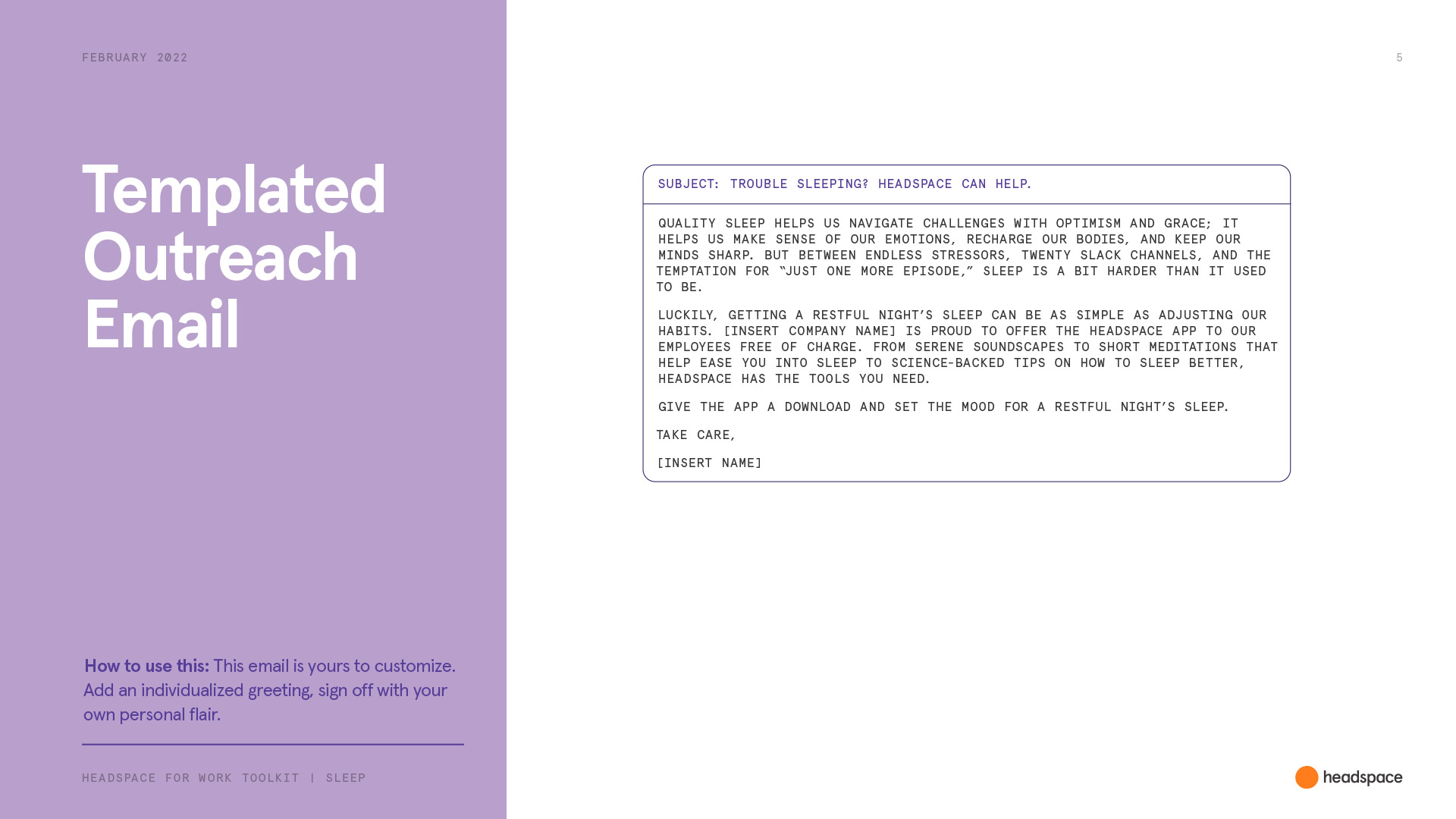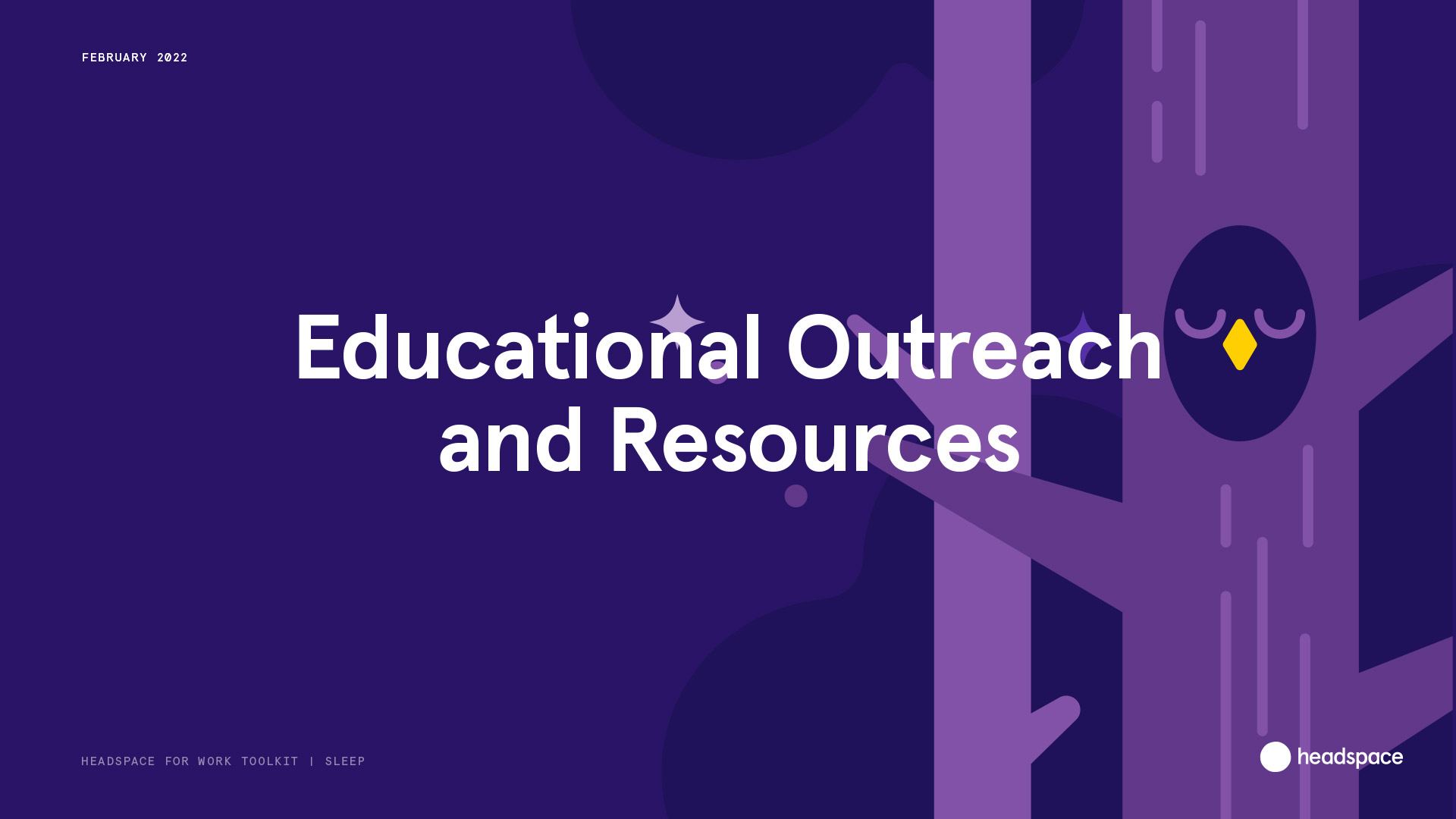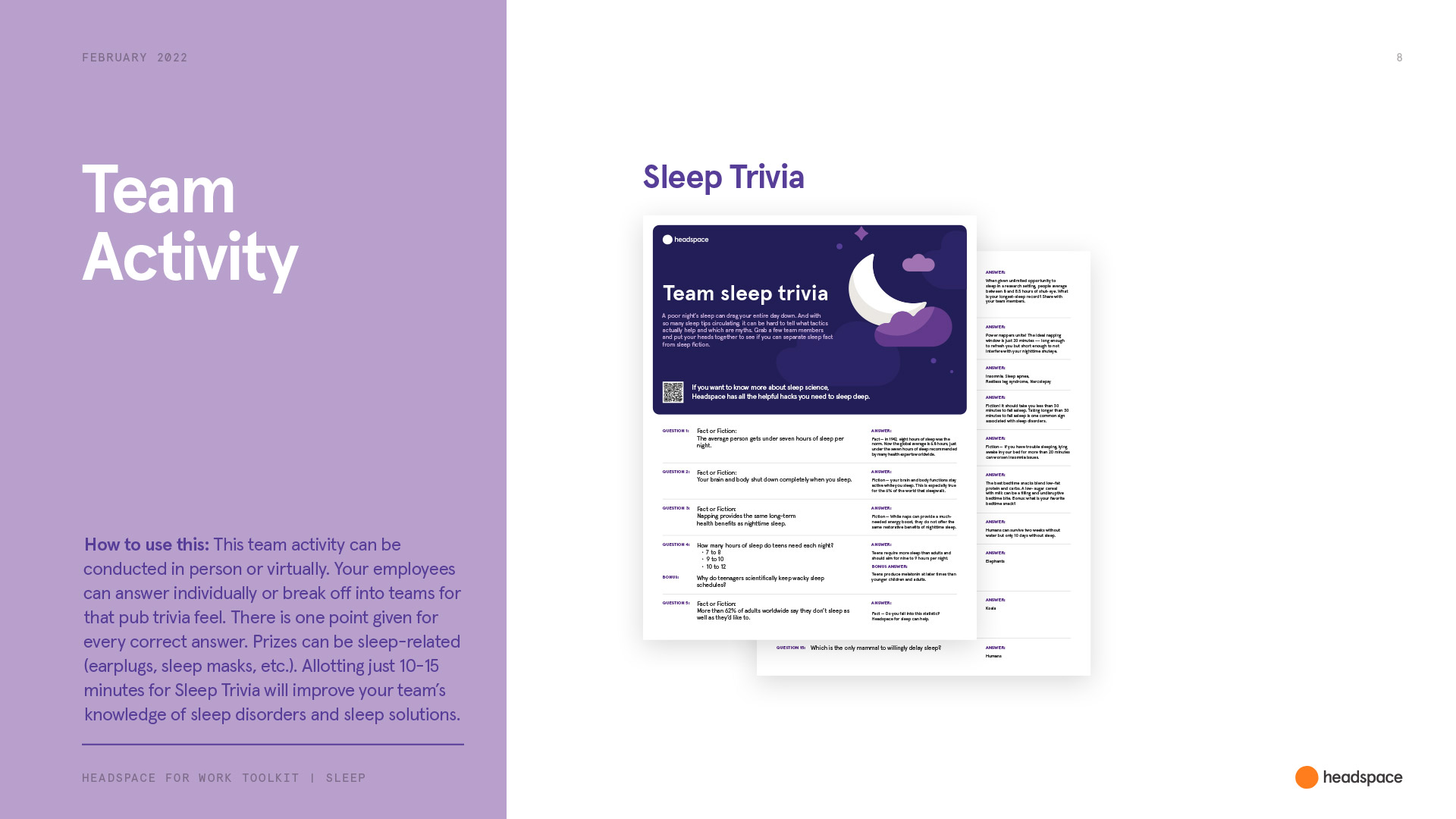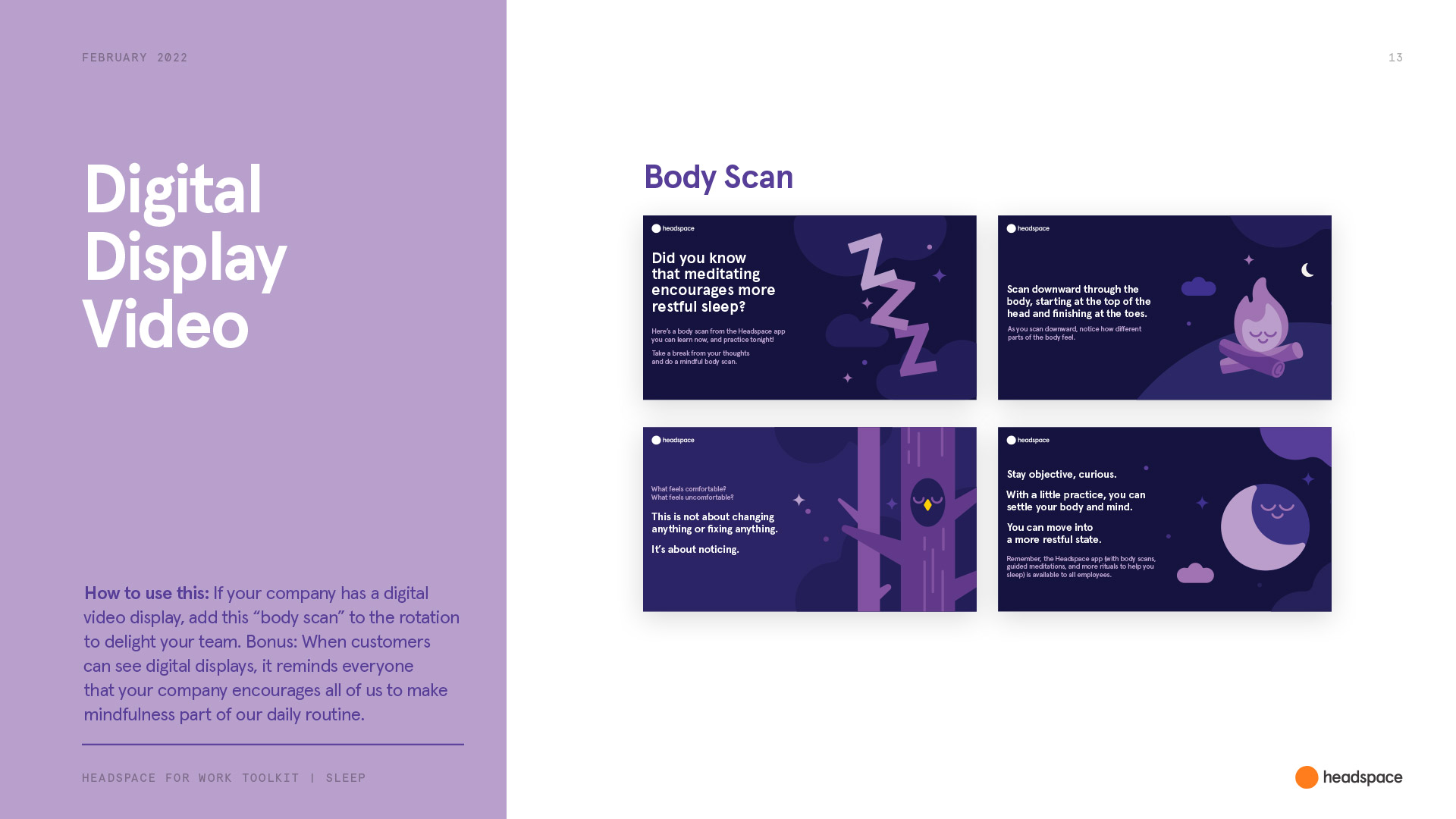Untapped Potential
Headspace was one of the first companies to use technology to help people develop a mindfulness practice, which is now widely recognized as a key contributor to good mental health. Since the launch of its namesake mobile app, Headspace experienced very strong, organic growth – growth that accelerated during the global COVID-19 pandemic. However, Headspace now finds itself in a much more crowded mindfulness service space, with consumer growth declining, requiring it to take full advantage of other opportunities for expansion.
Headspace for Work, Headspace’s B2B/enterprise product, was identified as one such area for growth, yet it had received little attention and investment to realize its potential. Targeting employers, Headspace for Work’s key audience, was viewed as the responsibility of sales, not marketing who could help drive both awareness and leads.
However, with employers waking up to the need to offer mental health services as a core employment benefit – mental health issues cost employers billions in turnover, productivity, healthcare, etc. – it became urgent to grow and scale Headspace for Work in a big way. It needed a marketing organization that could drive that growth to take advantage of the strategic opportunity, which is where Straight Up came in.
Design a More Strategic and Collaborative Marketing Organization
It quickly became apparent that Headspace for Work needed to build a more strategic and collaborative demand-generation operation to overcome four key challenges:
- Poor communication and collaboration between marketing and sales.
- Little confidence in the marketing-sales relationship.
- A lack of rigor and shared understanding in how to define the key steps in the sales process, which was essential to identifying what marketing was working and what wasn’t.
- No alignment around shared goals: Sales, which was off its projections by 50%, was not effectively communicating its goals to marketing.
By changing how the enterprise marketing group was set up, how it operated, and how it worked with other functions, we could position both the marketing and sales teams – and Headspace for Work – for greater success.
Align Around a Shared Goal
First, we set out to build a stronger relationship with sales by earning their trust as an effective partner, one that understood the pressure they were under and could deliver. This started with agreeing on and aligning around goals. Initially, sales provided an unrealistic goal of marketing delivering 80 to 90% of SQOs (the industry average is just 40 to 50%). Using past campaign performance and budget constraints, we collectively arrived at an SQO goal that was aggressive but achievable.
Build Confidence in the Marketing Function with Strategy and Rigor
With our shared goal in mind, we developed new campaigns targeting HR Admins (who make purchase decisions and implement employee benefit programs) and put a marketing-to-sales pipeline program in place. Each week, we reported on incoming leads, how quickly the leads were picked up, and the closing rate. We worked with sales to ensure leads were responded to within 24 hours and generated reports detailing the quality and nature of those sales conversations.
Based on the data we were tracking, each week we also worked to improve ad performance by testing copy, creative and offers, and expanding our reach. With this system, we improved cost per lead and showed that we could really move the needle. As a result, our budget was increased to scale the operation.

Strategy is just as much about what you don’t do as what you do: We also de-prioritized activities that weren’t productive to the short term needs or the organization such as events. This required socializing these changes and educating different teams about what we were doing and why.
Work with Internal & External Resources to Elevate Enterprise Creative
A third organizational relationship that was key to Headspace for Work’s success was that of marketing with Customer Success Managers. CSMs were frustrated with the lack of strong content and programs available to share with employer-side HR Admins who do the day-to-day work of driving the employee benefit programs, including Headspace for Work. They were caught in a reactive cycle of either having to produce their own content, which was not aligned with an overarching strategy and brand, or marketing provided time-sensitive content that was too late to be useful. This approach wasn’t making anyone look good.
So, as part of our content strategy, we developed robust campaign kits – complete with instructions on how to use them – well in advance so that both CSMs and our customers could plan ahead and execute well.
Set Customer Success Managers Up for Success
In addition to marketing’s relationship with Sales, we also invested in how it worked with internal creative teams, which were key to quickly turning around creative assets for our rapid-fire campaigns and developing a unique approach to enterprise vs. consumer creative. This required educating our creative partners on the differing needs of B2B/enterprise audiences compared to those of consumer marketing.
To fill in the creative gaps and expertise, we sourced and integrated two creative agencies into our teams: a full-service global agency to focus on Headspace for Work’s international business, and a local Los Angeles agency close to Headspace HQ to focus on brand and content strategy as well as content creation.
Strategically Invest in the Marketing Team
When Headspace and Ginger – a B2B platform focused on personalized crisis care, drug management, and therapy – merged it became the first end-to-end digital mental health solution. Seeing the results of the organizational work we’d already done, the chief marketing officer of Ginger asked Straight Up to help design the new enterprise integrated marketing organization, which now included Ginger. We also helped with two key hires to round out the team.
Additionally, we invested in mentoring the in-house team of three young marketers, providing strategic guidance to help them harness their immense talent, focus on the right things, and be more effective in their jobs.
“Beverly is truly one of the best marketers – and the best advisors – I’ve ever had the pleasure of working with. She has an intuitive ability to understand both the needs of the customer and business stakeholders –probably because she is so good at reading people! Most importantly, she can transform those insights into practical, actionable plans and rally an organization around what needs to be done. If you get the chance to work with her, jump at it.”
-Valerie Kaplan, Chief Marketing Officer, Headspace
↑100%
Marketing qualified leads
17X
Revenue per cost per lead
$14M
In revenue influenced (H2)
Shared Goal + Strategy + Rigor = Revenue
By aligning around a shared goal, establishing a rigorous demand generation system, investing in key relationships, and mentorship, we were able to effectively establish the marketing team as a peer to sales, one for bouncing around ideas and strategic conversations – a true partner helping them reach their goals:
- Increased marketing leads by 183%
- Increased marketing qualified leads by 100%
- Achieved SQO goal of 84%, which was a tremendous achievement as it was marketing’s first time delivering SQOs
- Cost per lead delivered 17x in revenue
- Marketing’s demand-gen efforts influenced $14M in revenue, equaling 44% of total business revenue for H2
The dramatic increase in leads gave Headspace for Work a head start in filling the pipeline for Q1 of the following year. This further stabilized and secured a predictable pipeline of revenue for the company.

